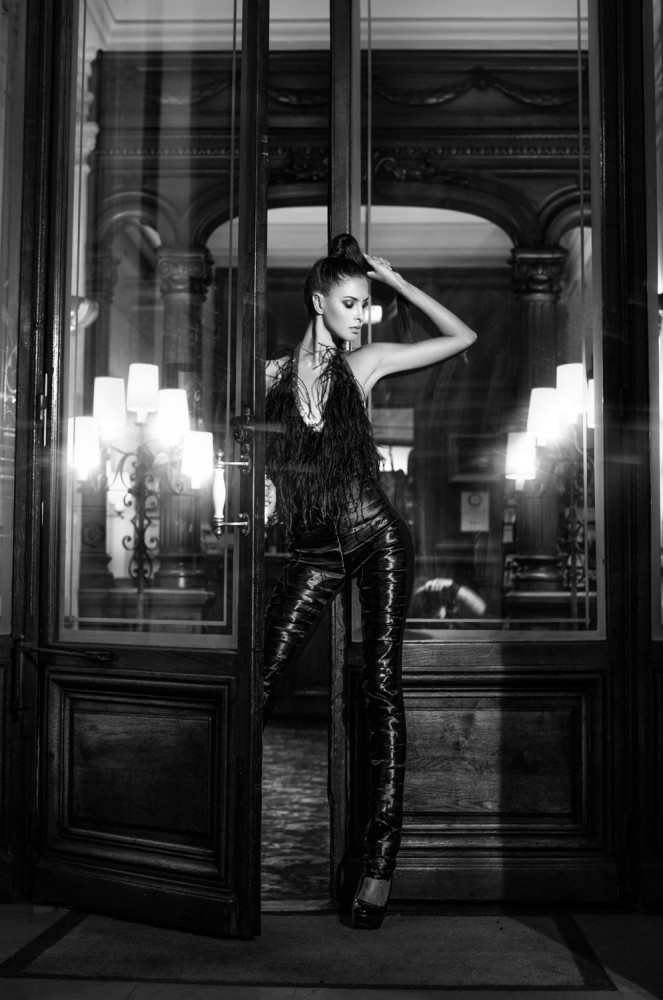
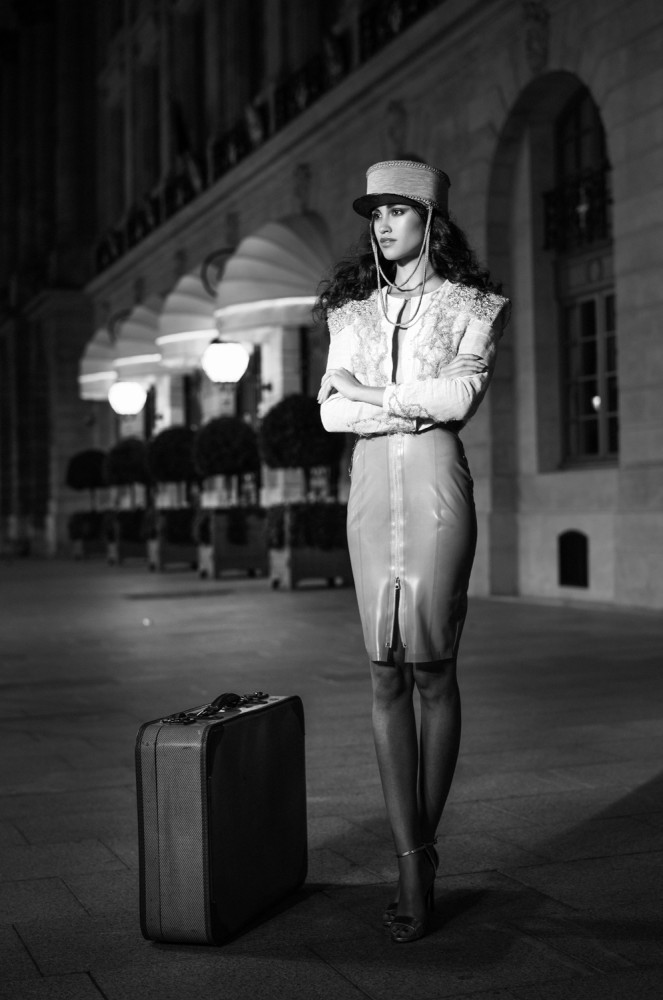
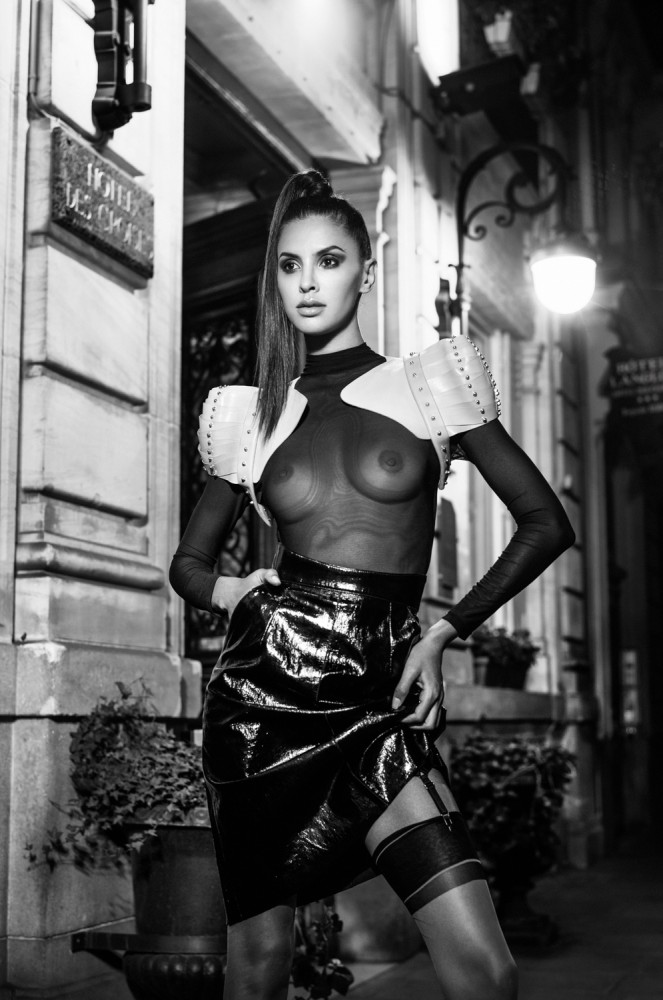
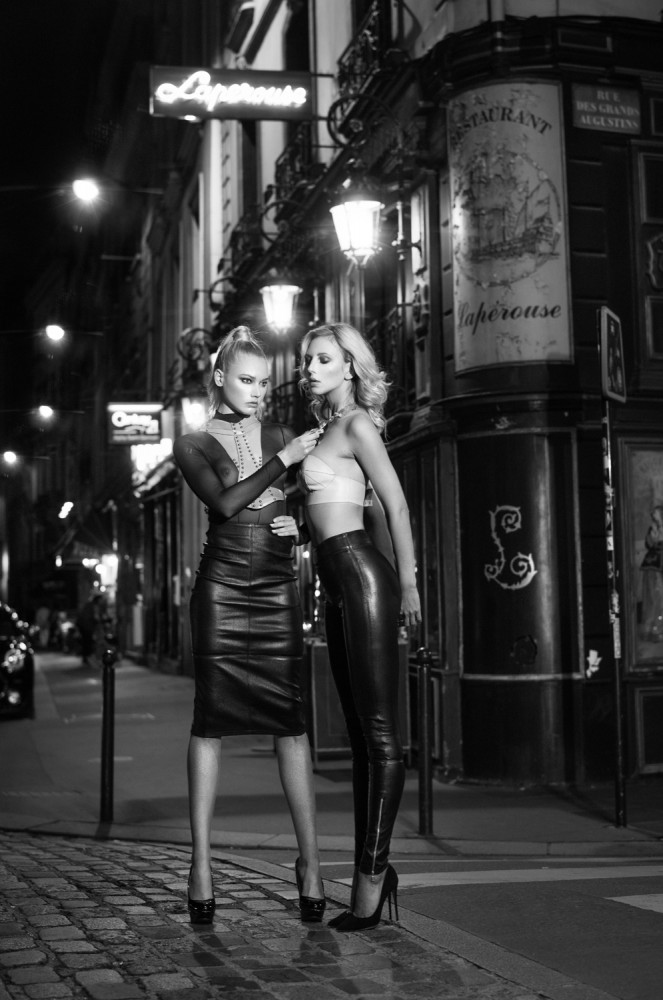
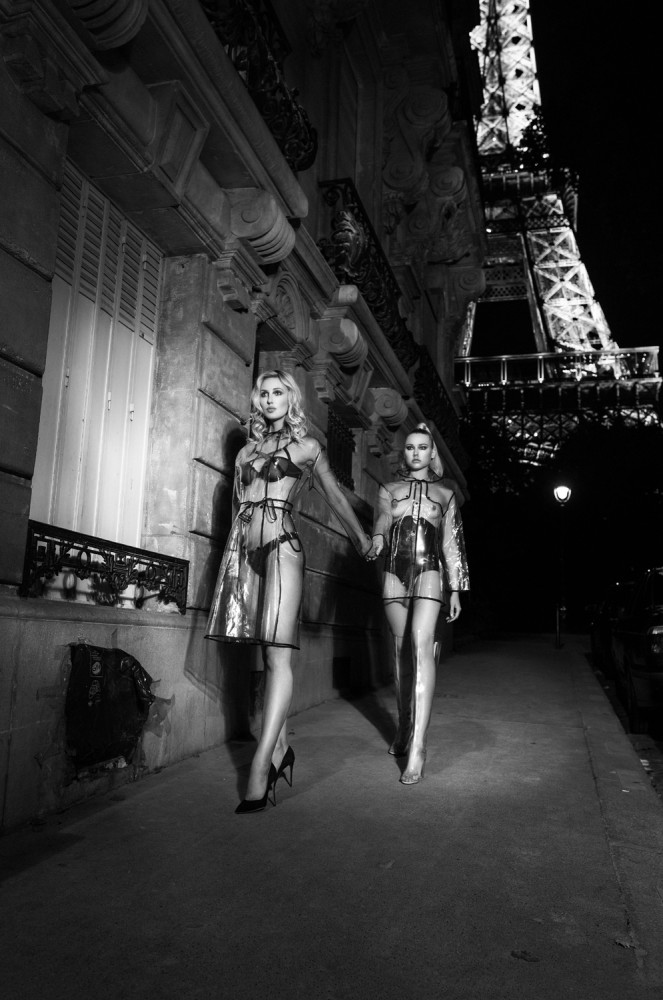
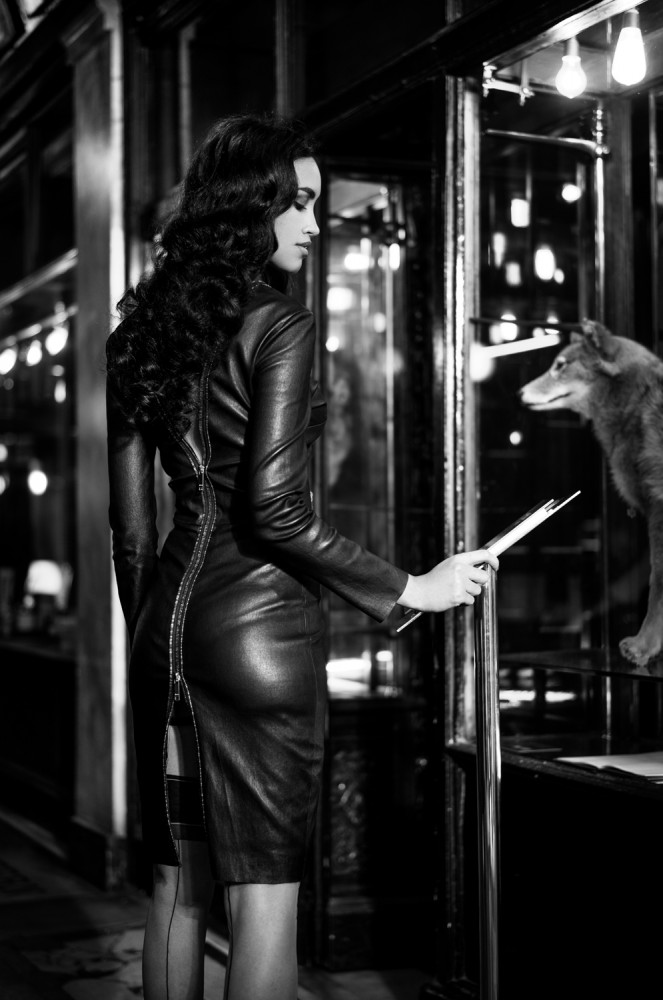
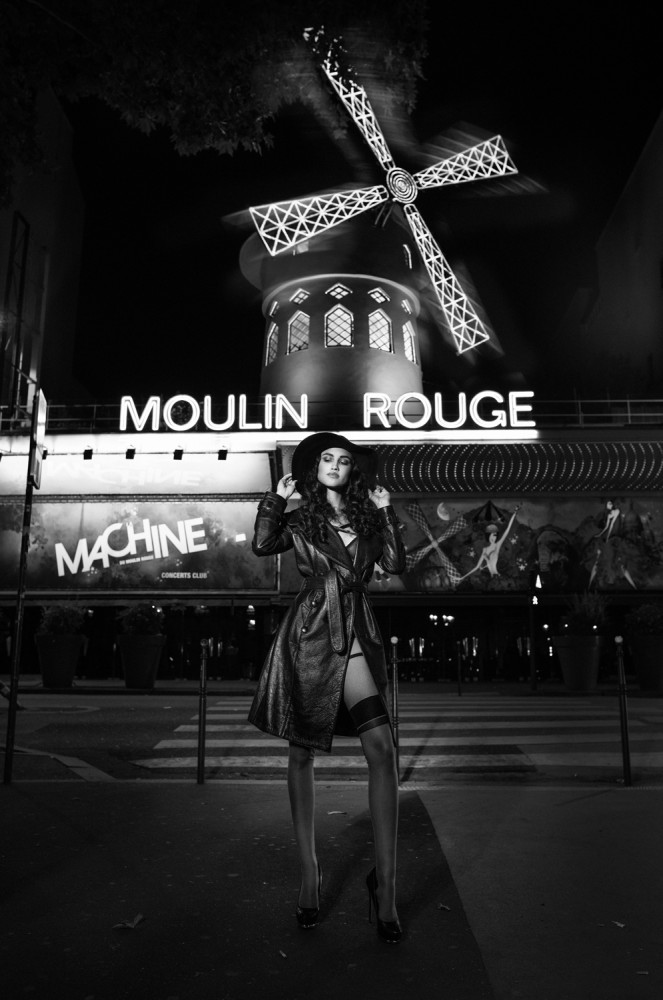
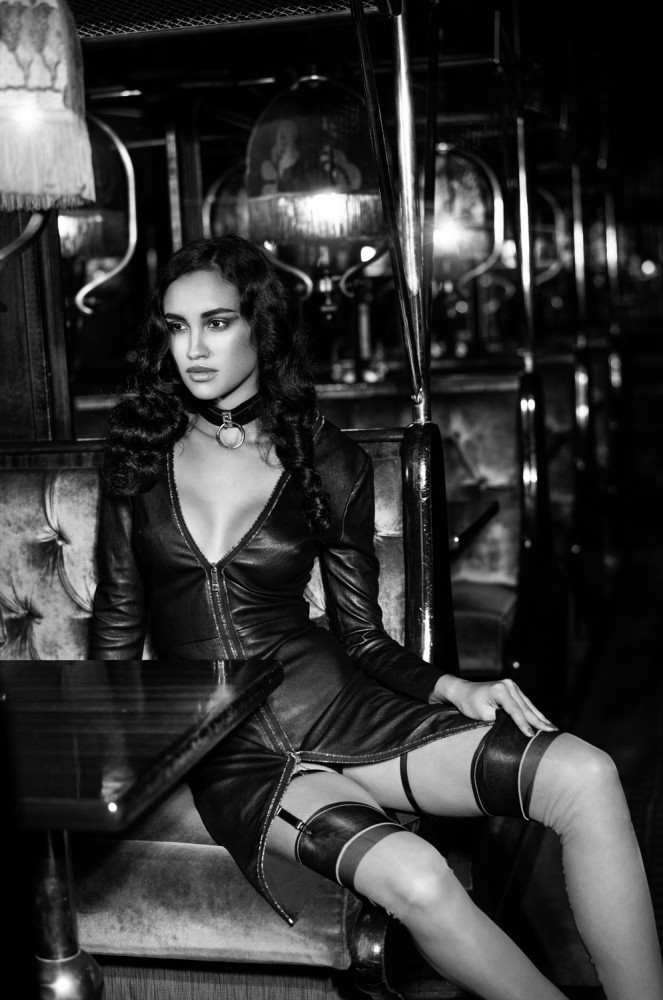
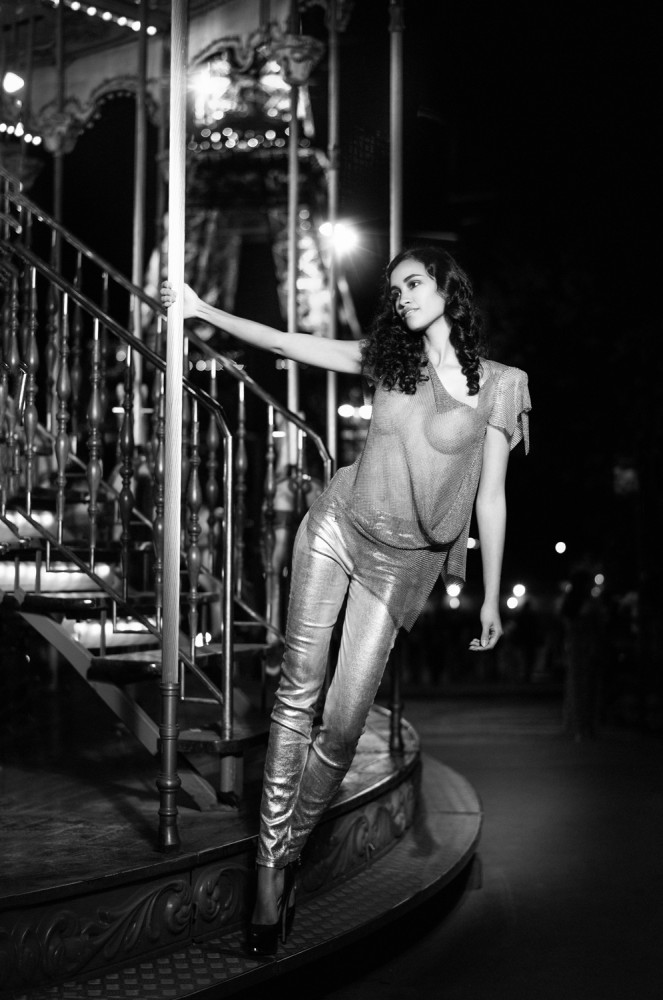
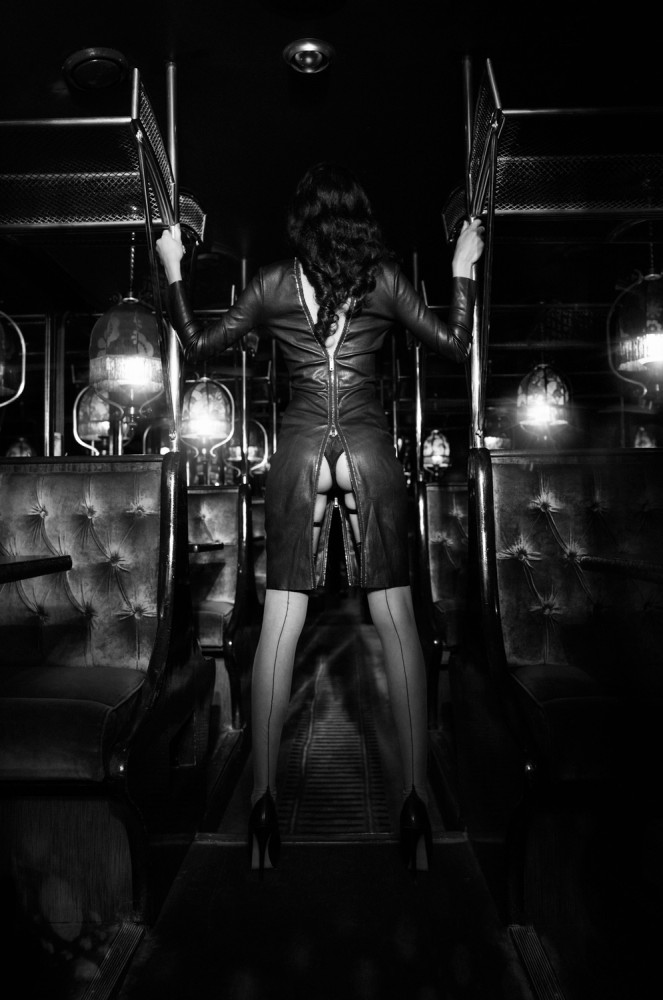
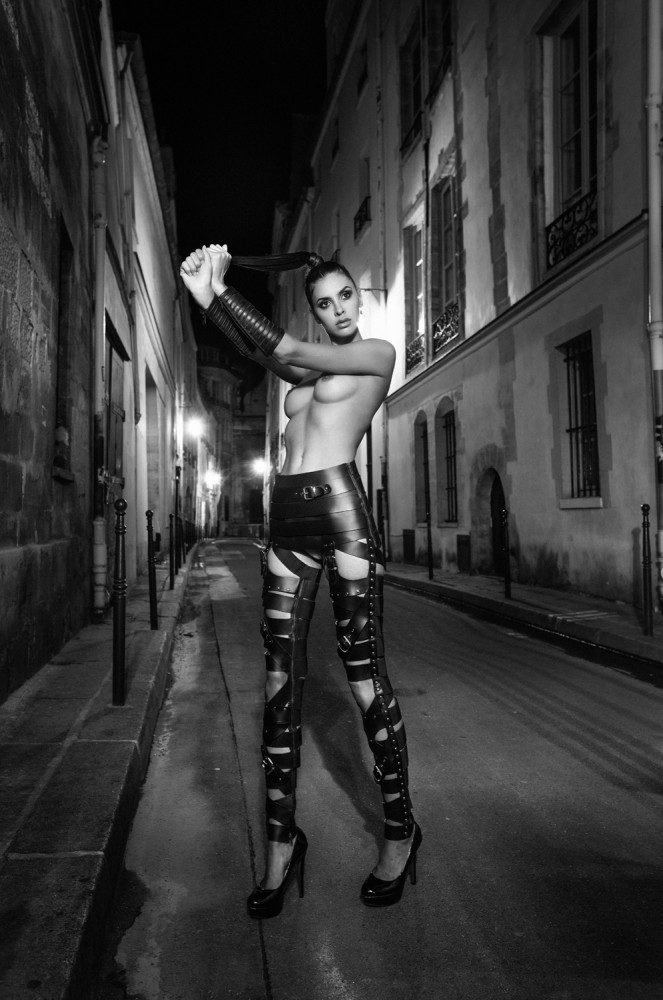
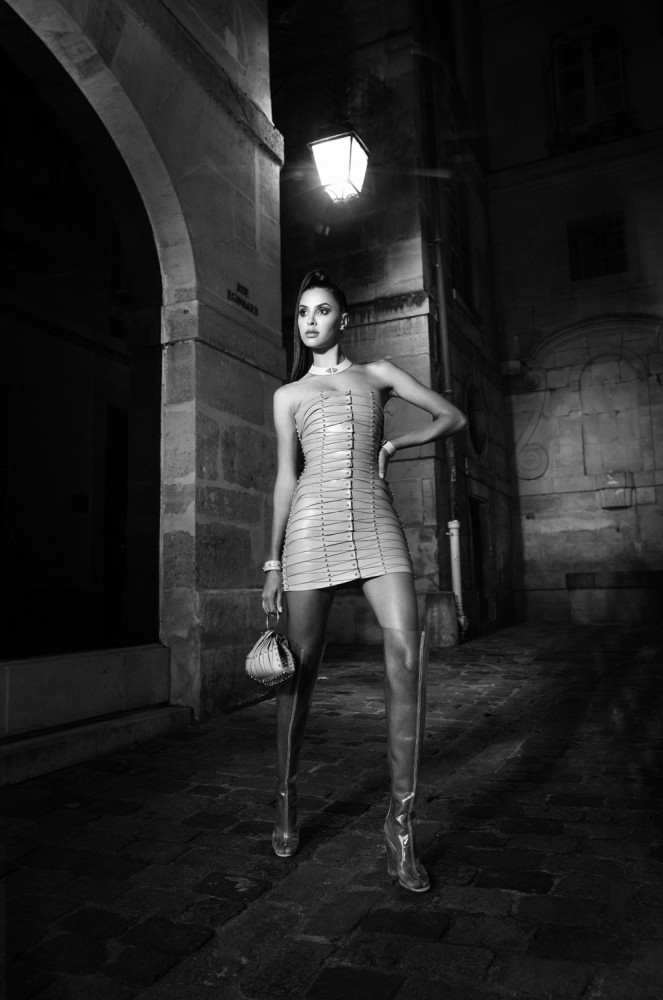
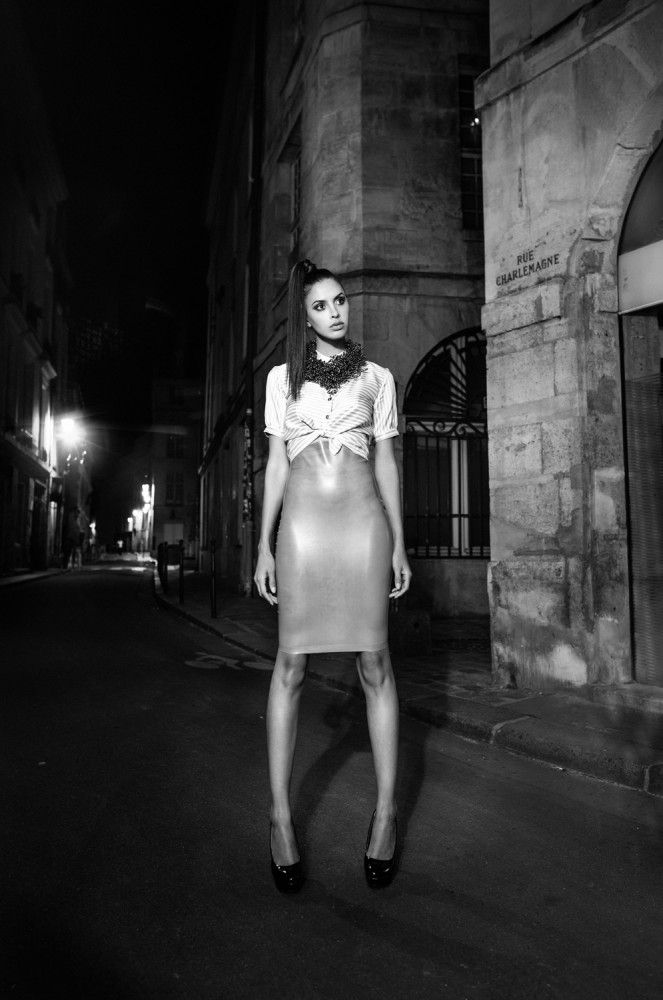
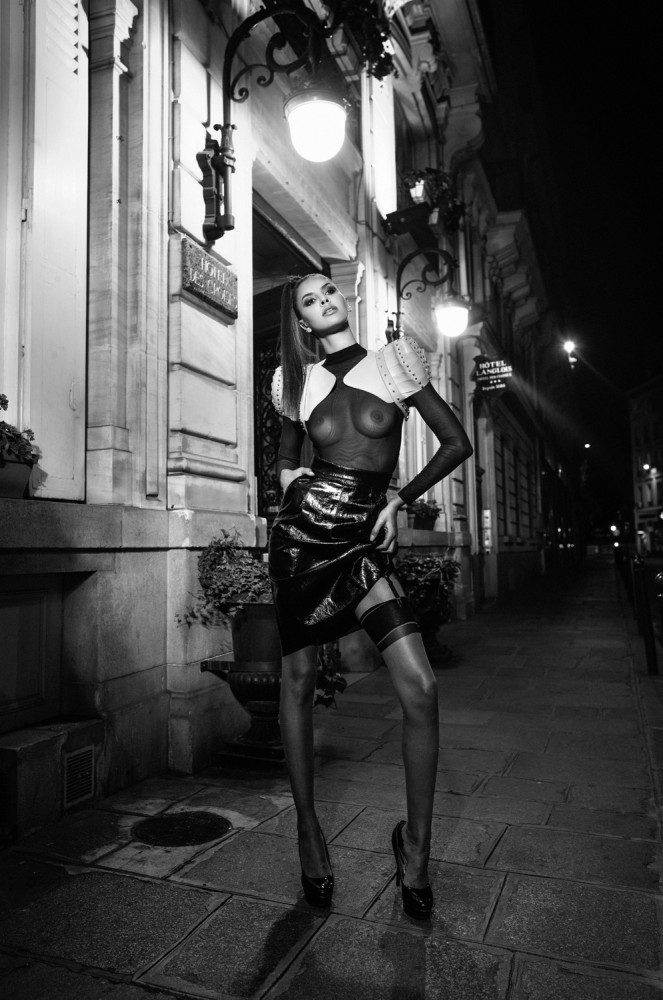
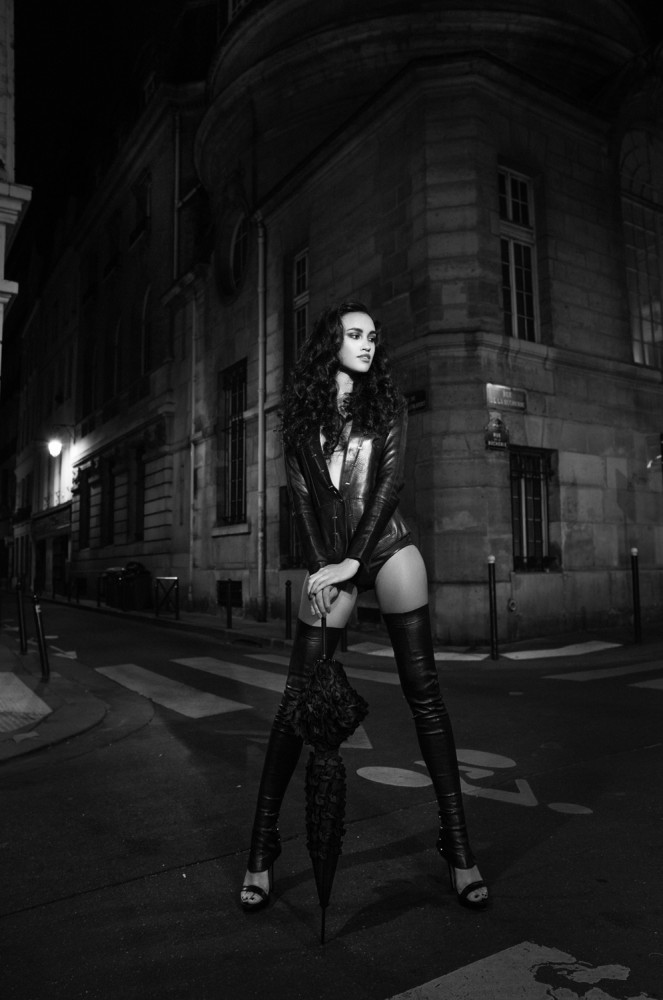

















INTERVIEW
Yves Kortum
PHOTOGRAPHY Yves Kortum STYLING Adela-Marinela Fort HAIR & MAKEUP Natalia Goff LOCATIONS Hotel Langlois Paris, Le Moulin Rouge, Le Ritz, Le Laperouse, Café Stern, Victoria Station Paris MODELS Mariana Martins @ Upmodels Paris, Nicky Barutzki @ Most Wanted Models Munich, Senta Schnabl @ MP Models Paris, Lilly Elise @ Wilhelmina Models CAMERA Leica S (Typ 007) with Summarit-S 35 f/2.5 ASPH. (CS) and Summarit-S 70 f/2.5 ASPH. (CS)
With every photo shoot Yves Kortum rediscovers the unique features and facets of women. His black and white images present the stronger sex – as he himself calls women – as tough, unearthly, seductive and, at times, vulnerable. In ‘A New Tone of its Own’, he brings us irresistible muses in the twilight magic of Paris by night.
Looking at your pictures of women over a certain period, there is no sense that you’ll get bored with the subject any time soon. What is it about it that continues to fascinate you?
I don’t think the subject will ever bore me. I love photographing women. There are so many different characters, so many different facets to rediscover each time. Each woman is different and I’m fascinated anew. What’s more, since the eighties when I started taking pictures, the definition of beauty has changed constantly, which is also why I’ll never stay with just one muse, but always look for someone new. My photography evolves with the variation of the characters I photograph. If you always photograph the same model, then at some point you can go no further and it becomes repetitive.
You often use perspectives that make the woman appear large, unearthly, strong and quite untouchable – a parallel to Helmut Newton, for whom you worked as an assistant. What kind of image are you looking to convey? In your opinion, what makes you different?
As always, I present strong women, the stronger sex. To do so, I often have to crawl on the floor, lie in the dirt, and so on. Nothing is too tough to get the picture I envision – in other words, the untouchable woman who, even so, often appears fragile, weak or dramatic. I’m always credited with parallels to Helmut, so what makes me different? Helmut prepared himself less, he calculated the whole thing a lot less, but he sexualised it a lot. I start out with a lot more preparation, and my images are less sexualised – even though I might like to, I always find myself departing from that during the photo shoot. I also trust myself less than he did at the time. It may also have to do with how things are today: you can quickly be accused of debasing women to the state of merchandise. I often compromise; Helmut never considered it and he also didn’t let people dictate to him. I also put a lot of store on the best material; Helmut couldn’t care less and mostly shot with small cameras putting little value on good equipment.
Even though the women’s poses don’t vary a lot, they are always very powerful and, in some way very loaded. What in fact are you trying to achieve in your pictures?
In fact, I have a vision before every photo shoot, an idea that then evolves. Then I look for the models who can help me fulfill it. If we look at the last editorial spread I did, then we see two models with a lot of variation in the poses. I didn’t want to repeat myself this time. I wanted to do less, I wanted to be the quiet observer, the voyeur, in other words. I give the team a briefing and the models do a couple of tests for the lighting: I can immediately see what a model brings and what I need to do to develop that further. On the whole, however, I have models who understand me and are able to carry out what I have in my mind. I give the models direction and then I can discover their strengths and weaknesses when they pose; then I always try to develop the strengths. We can only manage that when we work together.
Why do the models in the S Magazine never look directly at the camera? Is that deliberate or chance?
Not chance in fact, or maybe yes. Before beginning the photo shoot per se, I usually do a couple of test pictures with the models where they are looking into the camera, just beyond me, or away from me. Then I decide what I prefer and I do the whole series accordingly. But it also depends on my vision; and, as I said, calculating is always good, but afterwards you need to allow for the unexpected.
The pictures in ‘A New Tone of its Own’ have a certain darkness. Of course, it was nighttime. Why? You photographed on the street, pretty much in public spaces. Where do you see the difference to working in the studio, and are you beginning to move more in that direction? And how do you deal with the lighting in this case?
At times I have to step outside my comfort zone so as to keep creativity honest and to avoid the dangers of repetition. It’s also less boring that way. I love to shoot pictures in Paris at night: it’s quiet and no one disturbs us, no masses of tourists and also no security guards; there are only soldiers and police on every corner, but they’re always happy to see something like this. In the studio everything is much more calculated and not so real. On the street a lot more can happen, the chance element that I often work with makes my pictures more interesting. As to whether I will increasingly go in this direction, hmmm, I don’t think so. I’ve done a couple like this now, but I’m always looking for something new. A different light, a different technique. Shooting at night is also very, very exhausting. We only get 3, maximum 4, pictures finished between 10pm and 5 in the morning. First I look at the existing light, and I use it in such a way that the flash is only an accessory. I mostly position the flash at the right distance from the model, then I work with light formers that support the existing light. Of course, a camera like the S007 is perfect for this. The high ISO setting that is not too grainy, and the high speed lenses. A calm hand, long exposure. A picture that is shaky and not quite sharp, is often more interesting. In my opinion, most photographers get it all wrong; they use a flash as the main light source right from the beginning, use the full flash and long shutter speeds so as to avoid any shakiness. They don’t profit from the existing light, so that the photo is flat and has no depth; the blacks no longer have any detail.
Is there a special reason why you used the Leica S for this series?
As I mentioned above, I’m always looking for perfection, and what camera today is better than Leica’s flagship, the S007? At least for my contrast-rich black and whites, and the millions of shades of grey in between, it’s only possible with Leica cameras and lenses. So much detail in the deepest black all the way to the brightest white. The new 007 now has more possibilities to go to higher ISO settings that its predecessor. It’s a pleasure to work with it.